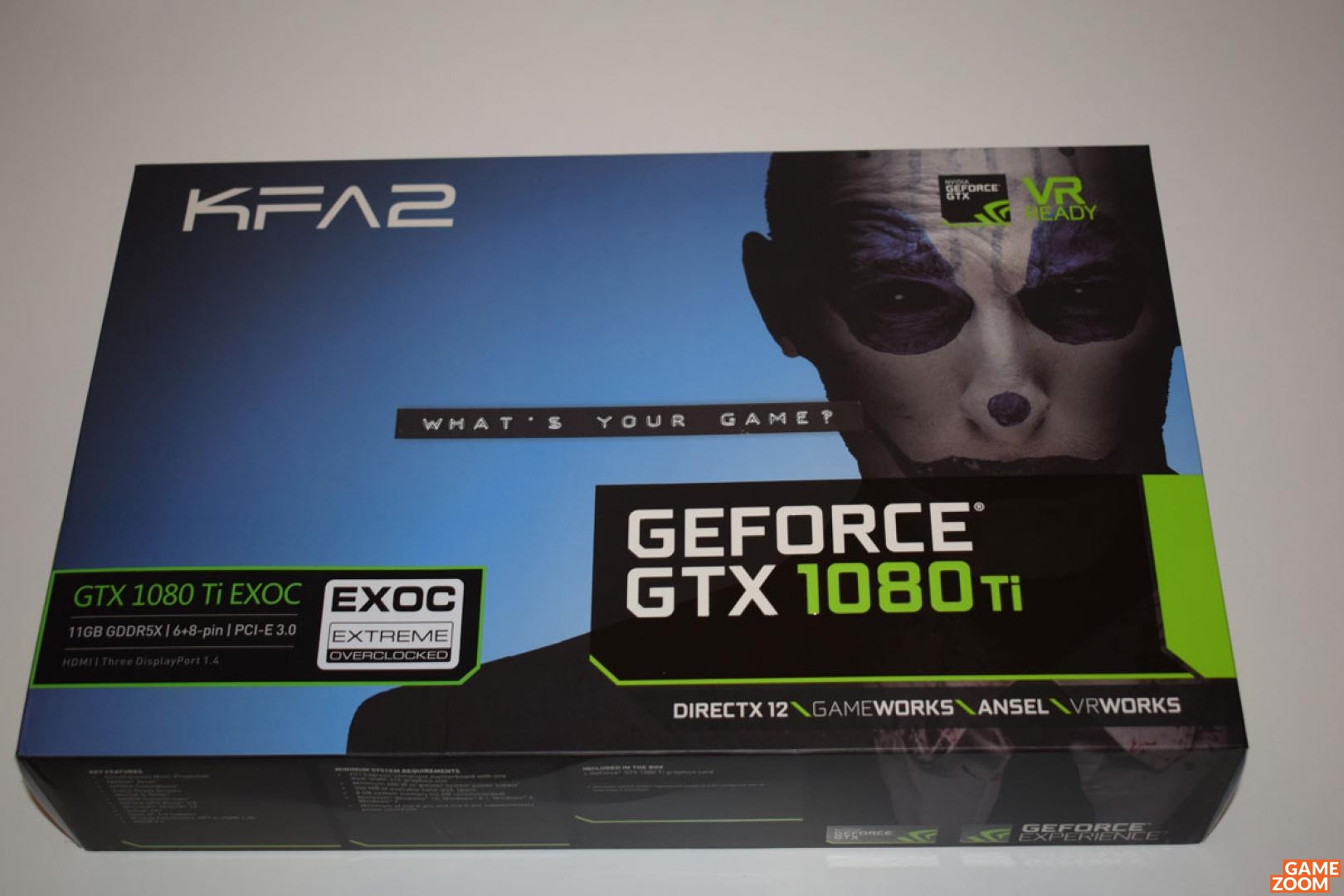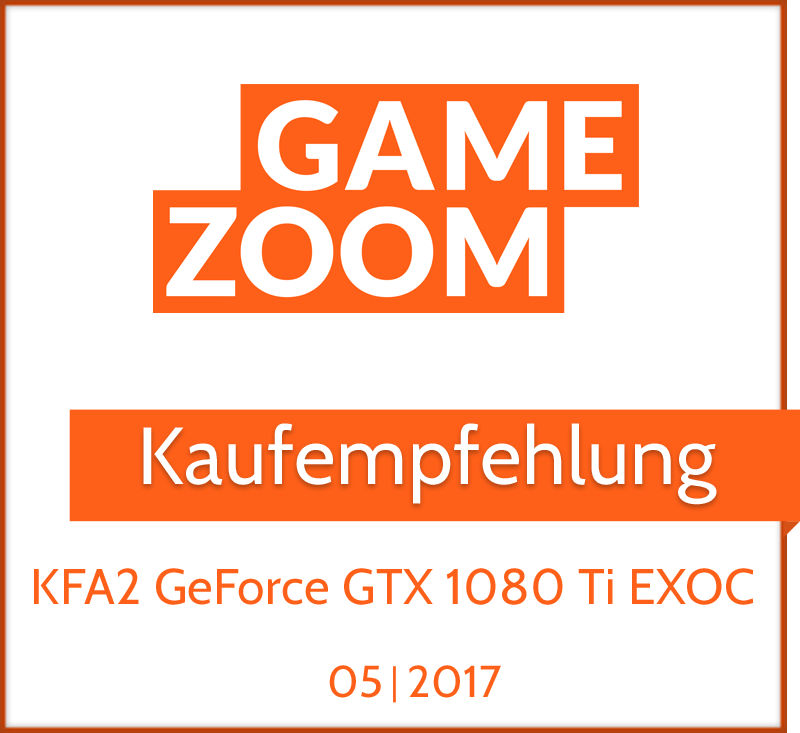
Alle Ergebnisse
Inhalt
Fakten
Hersteller
KFA2
Release
Mai 2017
Produkt
Grafikkarte
Preis
ab 688,04 Euro
Webseite
Media (10)
Galerie









 Über KFA2
Über KFA2
 Gegenüber dem Referenzdesign hat KFA2 ordentlich an der GPU-Taktrate geschraubt. Während NVIDIA einen Basis-Takt von 1.480 MHz vorsieht, punktet unser Testmuster mit 1.531 MHz. Der Mindest-Boost-Takt liegt bei 1.645 MHz. Der Grafikspeicher taktet mit 5.500 MHz.
Gegenüber dem Referenzdesign hat KFA2 ordentlich an der GPU-Taktrate geschraubt. Während NVIDIA einen Basis-Takt von 1.480 MHz vorsieht, punktet unser Testmuster mit 1.531 MHz. Der Mindest-Boost-Takt liegt bei 1.645 MHz. Der Grafikspeicher taktet mit 5.500 MHz.
 Asynchronous Compute
Asynchronous Compute
 Preis und Verfügbarkeit
Preis und Verfügbarkeit
Christoph meint: Empfehlung der Redaktion!
“KFA2 liefert mit der GeForce GTX 1080 Ti EXOC eine extrem schnelle und dazu leise Grafikkarte für Spieler ab. Dank neuer Pascal-GPU bekommt man eine enorm hohe Leistung geboten - und das bei einer „humanen“ Leistungsaufnahme. Neben der beeindrucken Leistung, endlich sind moderne Spiele mit 4K-Auflösung und mehr als 60 FPS spielbar, wissen auch Verarbeitungsqualität und Design zu gefallen. Einen großen Pluspunkt gibt es auch für das durchdachte Kühlkonzept, welches angenehm leise arbeitet. Darüber hinaus ist der Preis von unter 690 Euro sehr attraktiv für eine Geforce GTX 1080 Ti Custom-Karte. Kurz gesagt: Enthusiasten können bedenkenlos zugreifen!

Kommentar schreiben